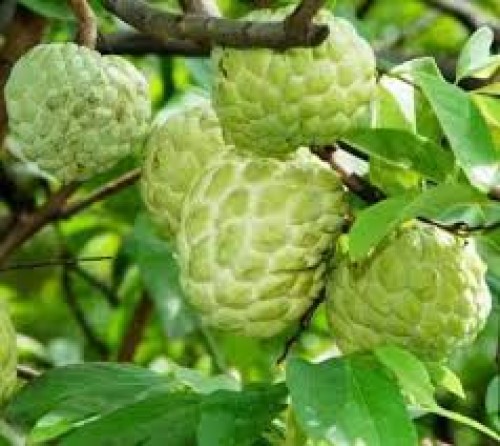off
-
Sold
-

out
Custard Apple Plant: Uses, Care & Advantages
The Custard Apple Plant (also known as Annona squamosa) is a tropical fruit tree renowned for its delicious, creamy, and sweet fruit. It is native to the tropical Americas but is now grown in many parts of the world. The plant is widely cultivated for its nutritional benefits and its easy-care nature, making it a favorite among gardeners and fruit enthusiasts.
Care of the Custard Apple Plant
Custard apple plants are relatively low-maintenance, but to ensure a healthy, productive tree, proper care is necessary. Here are some essential care guidelines:
- Climate: Prefers tropical or subtropical climates with temperatures between 20–35°C (68–95°F). It cannot tolerate frost.
- Sunlight: Requires full sun for optimal growth. At least 6 hours of sunlight daily is ideal.
- Soil: Prefers well-drained, sandy-loam soil with a slightly acidic to neutral pH (6.0–7.0).
- Watering: Needs moderate watering. Avoid waterlogging, as this can lead to root rot. Keep the soil moist, especially during dry periods.
- Fertilization: Apply organic compost or balanced fertilizer to improve soil fertility. Avoid over-fertilizing, as it can harm the plant.
- Pruning: Prune the tree to remove dead or diseased branches and improve air circulation. Pruning also helps to shape the tree.
- Pest & Disease Control: The plant may suffer from pests like aphids and scale insects. Regular inspection and organic treatments like neem oil can help control them.
Advantages of the Custard Apple Plant
- High Nutritional Value: Custard apples are rich in vitamins C and B, antioxidants, and dietary fiber.
- Easy to Grow: The plant is hardy and can be grown in both small gardens and larger orchards. It is low-maintenance and thrives with minimal effort.
- Quick Fruiting: Custard apple trees begin to bear fruit within 2–3 years of planting, making them a relatively fast-growing fruit tree.
- Medicinal Properties: The fruit, seeds, and leaves have been used in traditional medicine to treat ailments like diarrhea, digestive issues, and skin conditions.
- Beautiful Plant: The custard apple tree has a tropical appeal, with large, glossy leaves and striking flowers, adding aesthetic value to your garden.
- Supports Immunity: Due to its high vitamin C content, custard apples are excellent for boosting the immune system and improving skin health.
Uses of Custard Apple
- Fresh Consumption: The sweet, creamy flesh is eaten fresh and is highly nutritious.
- Desserts: Custard apples can be used in making milkshakes, ice creams, pies, and fruit salads.
- Juices: The pulp can be blended into refreshing juices and smoothies.
- Medicinal Use: The seeds are sometimes used as a remedy for intestinal worms, and the leaves are used for skin infections and to alleviate fever.
- Cosmetic Uses: The pulp is used in skincare for its hydrating and soothing properties, particularly for dry skin.
Conclusion
The Custard Apple Plant is a highly rewarding fruit tree, offering nutritious, sweet fruit that can be enjoyed in many ways. It requires little care, grows quickly, and is a valuable addition to any garden. Whether you are growing it for its delicious fruit or its medicinal benefits, this plant provides multiple advantages for both health and aesthetics.